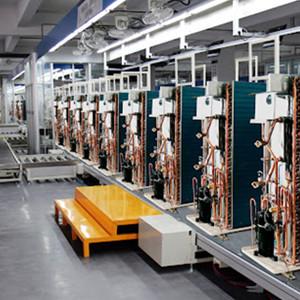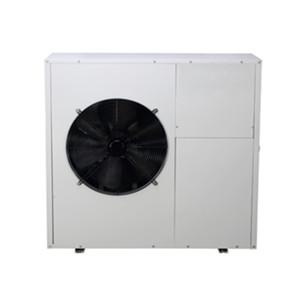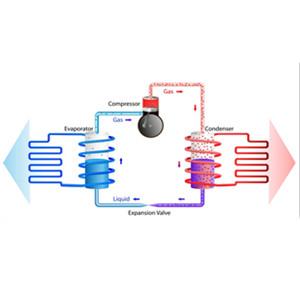Air Source Heat Pump Underfloor Heating Cost
Underfloor heating has always added a touch of luxury to a home. That
makes it a popular choice for many homeowners, if they're willing to pay for
it.
But how much will it cost? We not only look at the cost of underfloor
heating, but also its advantages and disadvantages. Then, we'll explore the
various scenarios where underfloor heating is highly recommended, not just a
luxury.
Read our comprehensive guide to underfloor heating costs to find out
everything you need to know!
How much does underfloor heating cost?
Underfloor heating typically costs between £2,000 and £10,000, but this
can be expanded further if the project is particularly large. You also need to
consider running costs, which again depend on the size of the installation.
Use about 4 square meters of floor heating in the bathroom. This will
cost around £10-11 per month, although factors like the type of underfloor
heating can also play a role (though not by much).
Factors Affecting Cost
There are many factors involved in accurately calculating the cost of underfloor heating. These include:
1. Whether the property is newly built
2. How much floor do you want to heat
3. Whether it is hot water or electric floor heating
For underfloor heating installations on newly built properties, this
work is usually included in the construction process. This helps keep
installation costs low because you don't have to retroactively add systems.
In addition to this, all the materials required for underfloor heating
are usually priced together with the total cost of the property itself. This
helps keep costs down as all the parts needed are usually available at
transaction prices.
If you do want to add underfloor heating to an existing property, you
need to consider the fact that you are paying for the work required to make the
building fit into it. This may be relatively simple in modern buildings, but
can become much more complex in older buildings.
Take, for example, a cottage in the countryside—one of those old
cottages with solid stone floors. Installing underfloor heating is much more
difficult here because you want to avoid damaging the stonework. If older
buildings have raised wood floors, it may be easier, but still challenging.
An example of where underfloor heating is impossible or difficult to
install is in a protected building. Often, their historic importance means that
the risk of tearing up the floor to install underfloor heating is too great,
and the potential damage ensures that you cannot alter the property. Still,
it's worth checking if you can get planning permission.

Advantages and disadvantages of floor heating
Underfloor heating is very good, but not perfect. Here are the pros and
cons of underfloor heating:
Advantage
1. Improve energy efficiency - underfloor heating is 40% more efficient
than radiators
2. Low maintenance cost - Underfloor heating usually comes with a
lifetime warranty as repairs are rarely required
3. Can be installed almost anywhere - underfloor heating is often still
possible, although older properties may have difficulties
4. Lets you centralize heating - with some systems, you can customize
where the heating is targeted (for example, you can heat in the bathroom, but
not in the kitchen)
5. Add value to your home - underfloor heating is a very sought-after
feature for home buyers and will almost certainly help you sell your home for a
higher price
6. Safer than radiators - no need to worry about toddlers scalding
themselves or hitting the sharp edges of the radiator
Shortcoming
1. High cost - Retro-installing underfloor heating is always more
expensive than installing in a new building; this is especially true in older
properties that require professional care
2. Destructive - if you install retrospectively, underfloor heating can
cause a lot of upheaval in your home
3. Heating takes time – underfloor heating takes longer to heat a room
than a fully heated radiator, but once heated, you can run longer and more
efficiently than a radiator
4. Affects furniture - most furniture is absolutely fine, but be careful
to place underfloor heating under items like kitchen utensils and cabinets
(warming can cause food to spoil faster); other things like bathing won't work
either
Does a heat pump need underfloor heating?
Heat pumps are a great eco-friendly alternative to gas boilers and can
be used with underfloor heating like strawberries do with cream. Because heat
pumps put out more energy than they absorb, and floor heating systems work
better at lower temperatures, combining the two is a great way to reduce your
energy bills.
Do heat pumps really need floor heating? Not always, but in some cases a
combination may be required. When looking to install a heat pump, it may also
be necessary to install underfloor heating if the heat pump cannot effectively
heat the existing radiator.
Sometimes you also need to replace some (if not all) radiators in your
home. When this happens, underfloor heating looks even more attractive!
Either way, if you're considering underfloor heating, we definitely
recommend considering whether you can get a heat pump.
The popularity of floor heating
The popularity of underfloor heating has been rising rapidly over the
years. According to a study by AMA Research, underfloor heating currently
accounts for 7.7% of the heating industry.
What's more, with the widespread adoption of heat pumps (as gas boilers
are phased out), underfloor heating will become more popular. The
aforementioned study also predicts that the market will grow at a rate of 4-6%
per year, so the industry needs to ensure that there are enough trained
installers to meet the demand.
How environmentally friendly is underfloor heating?
Very. Underfloor heating requires much lower temperatures than
radiators. This is because underfloor systems can distribute heating over a
larger area, unlike radiators that need to heat a room from a relatively small
surface area. And because they have less surface area, the heat sinks must then
reach higher temperatures (and therefore use more energy).
When combined with a heat pump, underfloor heating becomes more
environmentally friendly because the heat pump uses only electricity and
ambient heat from the air or ground.
Next step
While the initial cost and installation work of underfloor heating may
be prohibitive for some, the long-term benefits are worth it.
With underfloor heating, not only can you heat your home more
efficiently, you can also gain that luxurious feel that can transform your
home.
When you combine underfloor heating with a heat pump, your electricity
bill will look healthier every month.
You don't need to worry about rising fuel costs, and you can rest easy
knowing your carbon emissions will be much lower than with conventional
boilers. It's a win-win situation!
If you want to start saving with a heat pump, simply put your details
into our easy-to-use comparison tool. We will pass your details on to our
specialist suppliers who will contact you with a free quote for you to compare.





